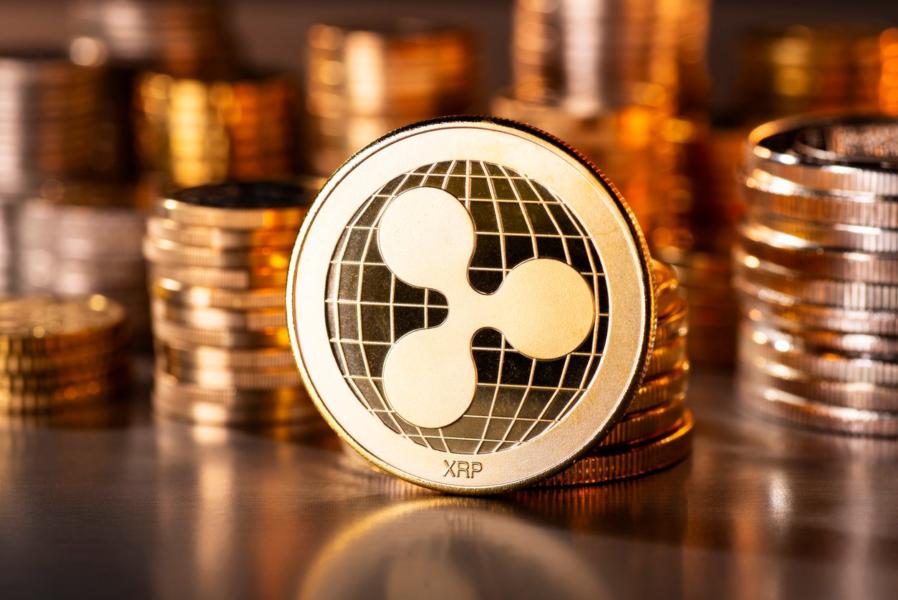Will There Be a Spot XRP ETF? The Ripple Effect Swells

The launch of XRP futures ETFs may mark the beginning of a familiar regulatory path toward full approval of a spot XRP ETF. Much like how Bitcoin’s first futures-based ETF set the stage for the wave of spot Bitcoin ETFs approved in 2024, the debut of XRP futures funds could serve as a regulatory proving ground for investor demand and market stability.
With asset managers like WisdomTree and Franklin Templeton pushing forward with filings and the Securities and Exchange Commission already reviewing several proposals, market watchers are asking: Will XRP follow Bitcoin’s blueprint from futures to spot?
With regulatory reviews underway, a public comment phase active and futures ETF approvals imminent, expectations are high that spot XRP ETFs could be approved by late 2025. This would constitute a major milestone in legitimizing Ripple and broadening crypto exposure for retail and institutional investors alike.
Spot XRP ETF Race Heats Up
The SEC is currently reviewing multiple spot ETF applications for XRP, including proposals from WisdomTree, Franklin Templeton, Bitwise and Grayscale. The spot funds would be structured similarly to the existing spot Bitcoin ETFs and Ethereum ETFs.
Industry sentiment is increasingly optimistic, with recent estimates pegging SEC approval odds at around 95% by year-end.
Meanwhile, ProShares and other firms are launching XRP futures ETFs, which may bolster momentum and build familiarity with XRP-based investment vehicles. Launched in April, the Teucrium 2x Long Daily XRP ETF (XXRP) is a futures-based, leveraged ETF that has already attracted over $240 million in assets.
Futures ETF approval often serves as a precursor to spot ETF green lights, increasing the pressure and likelihood of full SEC approval.
What Is XRP?
XRP is a cryptocurrency created by Ripple, a technology company that aims to facilitate cross-border payments. It is designed to be a fast, efficient and scalable digital asset. Unlike Bitcoin, which uses a proof-of-work consensus mechanism, XRP uses a consensus mechanism called XRP Ledger (XRPL). This allows for faster transaction speeds and lower transaction costs.
XRP Key Features and Benefits
- Purpose: XRP was created to solve the inefficiencies of the traditional banking system, particularly the slow, expensive nature of cross-border payments. Ripple's goal is to enable seamless, near-instant global money transfers for banks and financial institutions.
- Transaction speed: XRP transactions are extremely fast, typically settling within three to five seconds, making it much quicker than other cryptocurrencies like Bitcoin or Ethereum, as well as traditional banking systems.
- Low transaction fees: XRP offers very low transaction fees compared to other cryptocurrencies, which is a key reason it is used for moving large sums across borders.
- Supply: XRP has a fixed supply of 100 billion tokens, of which a significant portion is held by Ripple Labs. Unlike Bitcoin, where new coins are mined over time, all XRP tokens were created at inception.
- Decentralized ledger: While Ripple controls a large portion of XRP, the XRP Ledger is decentralized, with independent validators approving transactions. The consensus protocol used ensures that XRP transactions are verified without relying on a traditional mining process.
- Use case in banking: Ripple has partnered with numerous financial institutions to integrate XRP as a liquidity bridge in its RippleNet network, allowing for faster and cheaper cross-border payments between banks and payment providers.
History Repeats? From Futures to Spot Approval
In October 2021, the ProShares Bitcoin Strategy ETF (BITO) launched as the first Bitcoin futures-based ETF in the U.S. It marked a significant milestone by offering traditional investors exposure to Bitcoin via regulated futures contracts without needing to hold the asset directly.
This futures ETF approval laid the regulatory groundwork and market infrastructure for what came next: After several years of rejected proposals, spot Bitcoin ETFs were approved in January 2024, including offerings from BlackRock, Fidelity and others. These spot ETFs have since attracted billions in assets and opened the door to institutional adoption.
Why the SEC Starts with Futures
The SEC has historically shown more comfort with futures-based ETFs because:
- They trade on regulated futures exchanges (CME).
- The SEC can supervise market behavior more easily through futures markets.
- There's a legal precedent for futures ETFs dating back to commodities and even equity volatility products.
- This makes futures ETFs a testing ground for investor interest and market behavior.
What It Means for XRP: A Swelling Ripple Effect
The upcoming XRP futures ETFs, like those expected from ProShares in July 2025, represent a first step toward mainstream institutional adoption of XRP. If these products gain traction and function smoothly, they will strengthen the case for a spot XRP ETF, just as BITO helped pave the way for spot Bitcoin ETFs.
The pattern is clear: Futures ETFs act as the regulatory precursor to spot ETFs. With XRP futures ETFs launching soon and spot ETF applications under SEC review, we may be watching the Bitcoin ETF playbook replay, this time with Ripple's XRP.
If so, spot XRP ETFs could see approval within the next six to 12 months, assuming a favorable market response and continued regulatory momentum.
Disclaimer: This article is for informational purposes only and does not constitute financial advice. Investing in ETFs involves risks, and investors should carefully consider their investment objectives and risk tolerance before making any investment decisions.
At the time of publication, Kent Thune held a position in XXRP.
Permalink | © Copyright 2025 etf.com. All rights reserved